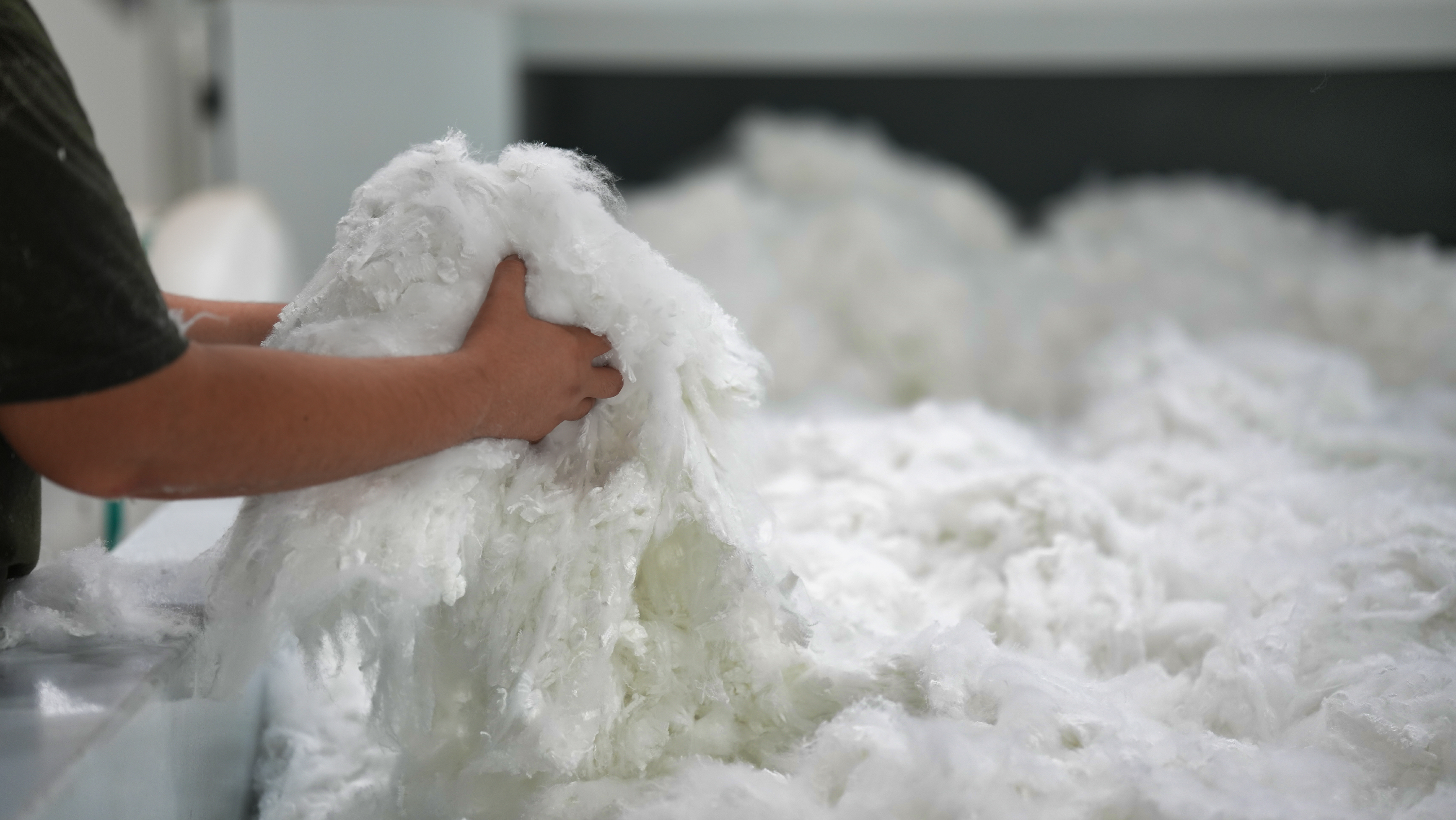How to Prepare Staple Fibers

A Staple Fiber is a fiber of defined length fiber used to create yarn.

A Staple Fiber is a fiber of a short, defined length that is used to spin into a yarn. The opposite of a staple fiber would be a continuous filament, which is a term that is commonly understood. There are several steps to prepare staple fibers for processing, and we wanted to give you a quick overview of the process. Let’s get started!
These are the steps to prepare those fibers:

Natural fibers, such as cotton or wool, undergo processes like ginning, cleaning, and blending to remove impurities and achieve uniformity in fiber quality.
[IMAGE GOES HERE]
In this step, the long filaments of synthetic fibers or continuous strands of natural fibers like silk, are cut into shorter lengths to create staple fibers. The cutting process can be accomplished through different methods.

Carding machines comb the fibers, aligning them in a parallel arrangement and removing any remaining impurities. The output is a continuous web of fibers called a carded sliver, which is then cut into staple lengths.

Garnetting machines pull the fibers apart, separating them into individual tufts or small groups. These tufts are then cut to create staple fibers.
[IMAGE GOES HERE]
Chopping machines or cutters can be used to cut continuous filaments or strands into desired staple lengths.

In cases where a desired fiber blend or mix is required, staple fibers from different raw materials may be blended together. This step ensures uniformity and consistency in the fiber composition.

After cutting, the staple fibers may undergo drawing and drafting processes. Drawing involves passing the fibers through sets of rollers or godets that elongate and align them, improving their strength and uniformity. Drafting further stretches and aligns the fibers, increasing their parallel arrangement and optimizing their properties.

Following the drawing and drafting steps, the staple fibers may undergo conditioning processes to achieve the desired moisture content and other desired properties. Conditioning can involve steaming or moisturizing the fibers to ensure proper flexibility and stability.

Once the staple fibers are processed, they are compressed into bales or packages for storage, transportation, or further manufacturing processes.
It's important to note that the specific processes and machinery used to manufacture staple fibers may vary depending on the fiber type, desired properties, and the manufacturer's production methods.
We hope you enjoyed reading these steps to prepare staple fibers- If you ever have any questions about the content that we post, please feel free to reach out! We love to discuss anything that has to do with conveyor belting and accessories- we are a bit obsessed!
LEAVE A REPLY